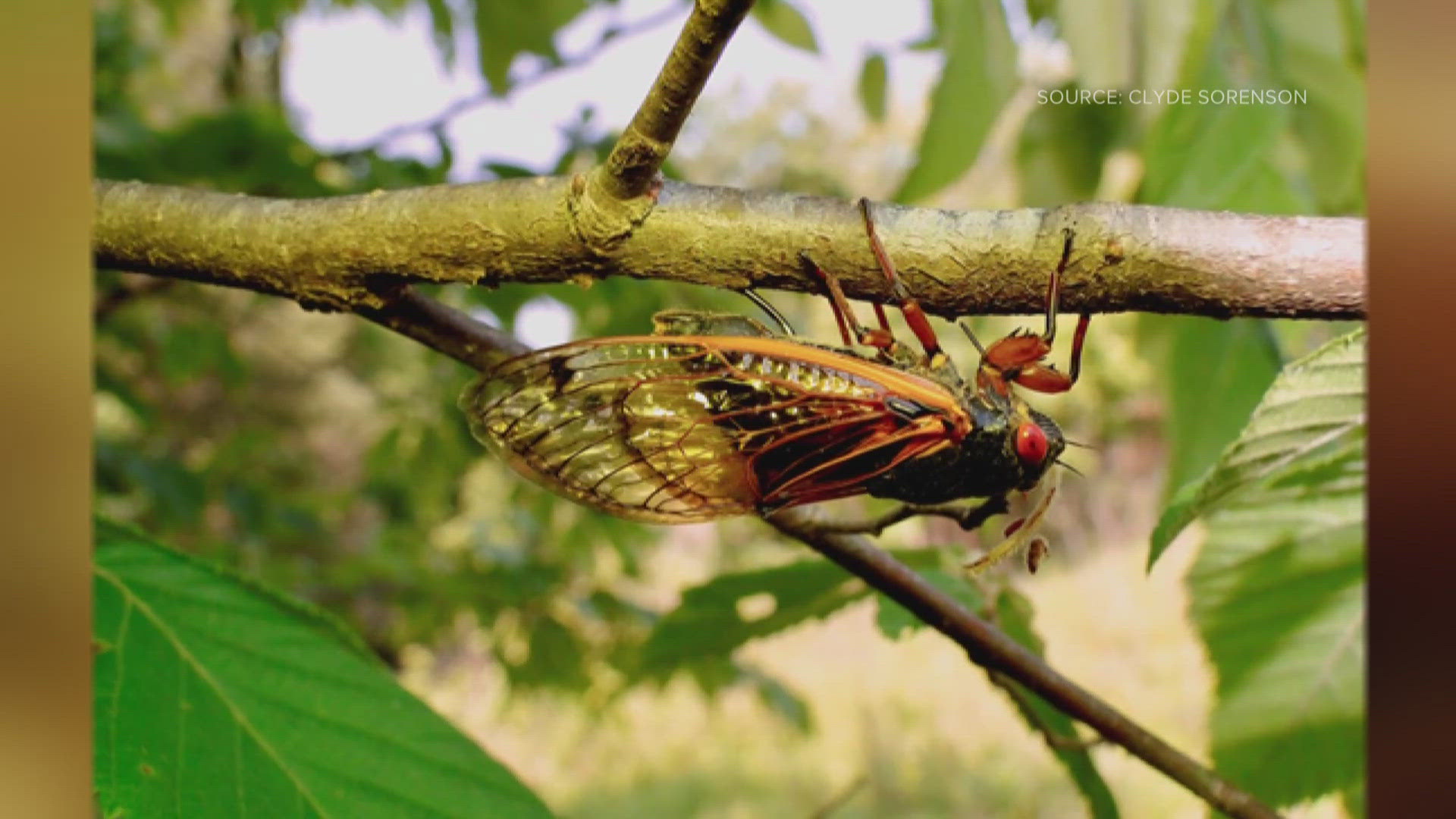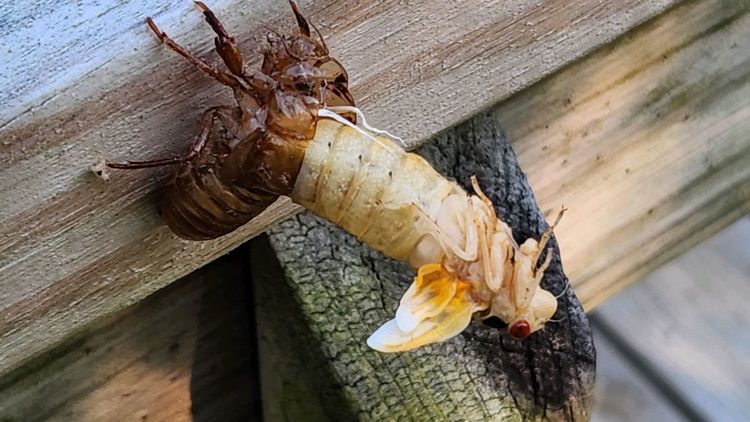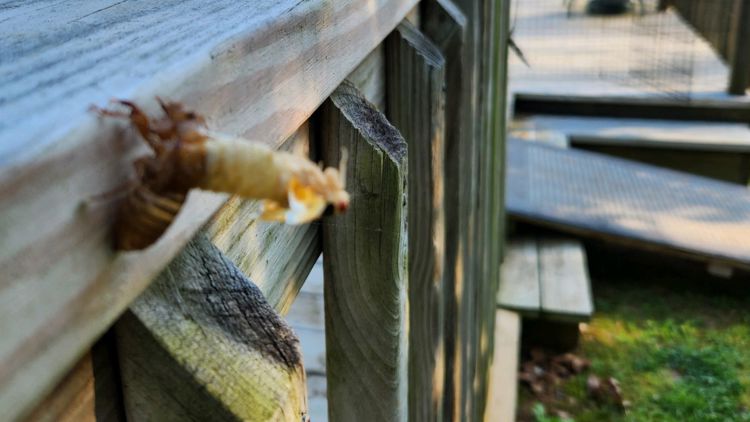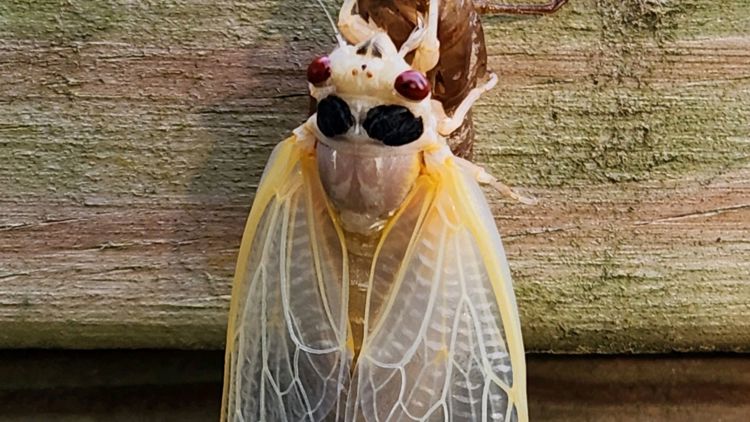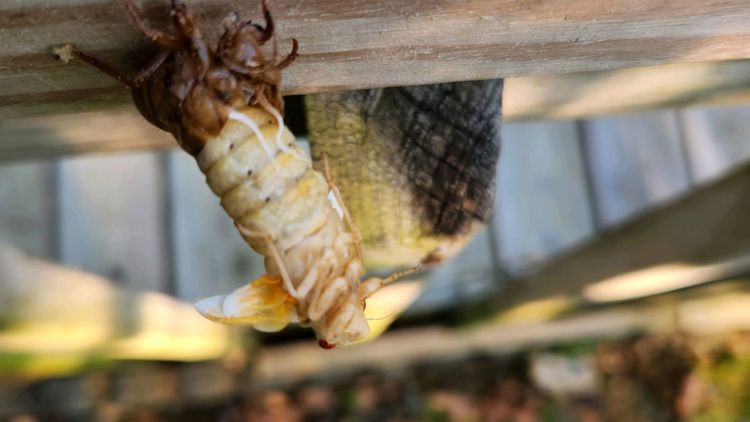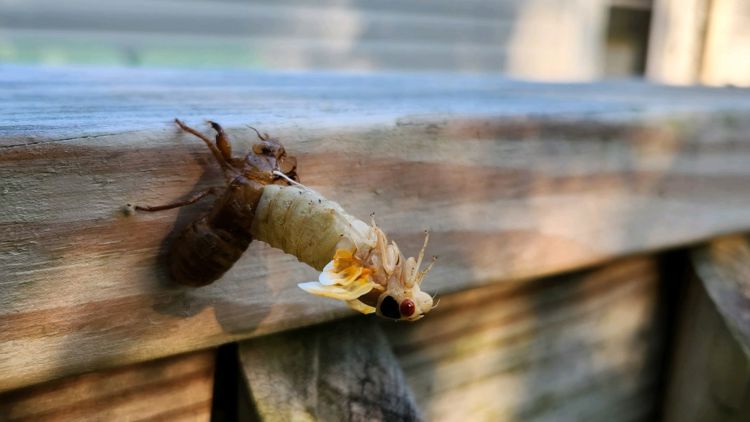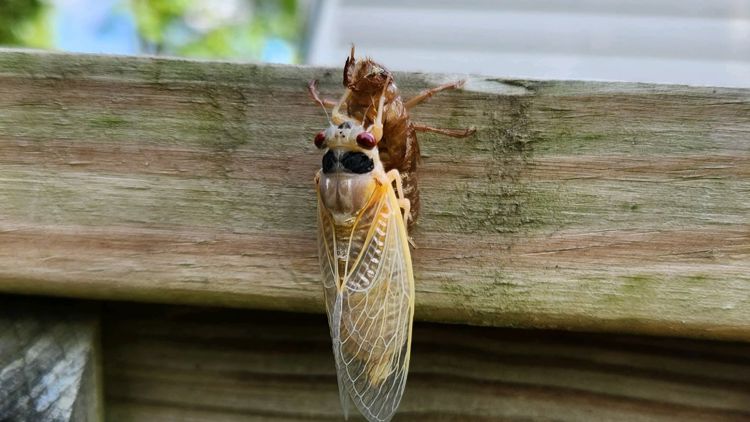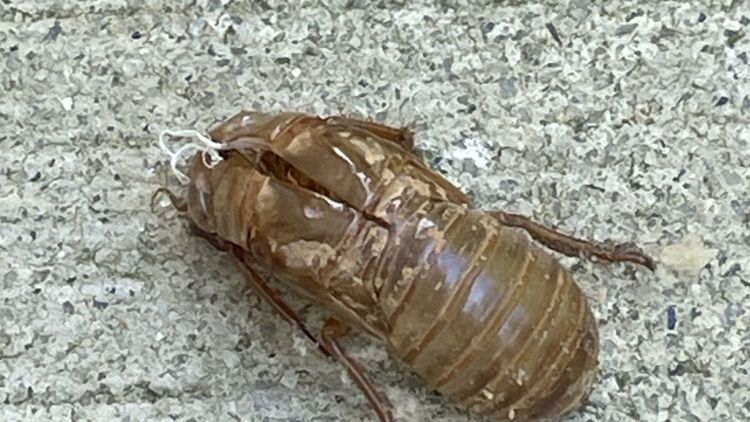NORTH CAROLINA, USA — The noticeable cicada hum that took over parts of North Carolina over the past few weeks is now slowly coming to a close.
"They are dying off in large numbers," said Clyde Sorenson, an NC State Entomology professor.
Over the last couple of months, the 13-year brood of the periodical cicada has been spotted in multiple North Carolina counties, including Alamance and Burlington in the Piedmont Triad. The first cicadas of this cycle first emerged in mid-April.
Now that many of them have died off, as expected, it's time for the next phase of the life cycle.
"If you travel through areas where there were good numbers," Sorenson said. "You should be seeing flagging of twigs in oaks and other trees, where the females have cut slits to lay their eggs."


According to Sorenson, the eggs will hatch in five or six weeks, and the nymphs will either drop or crawl to the ground. Then, they'll burrow until they find a suitable tree root to start feeding on. They'll stay there for the next 13 years.
Why haven't I seen the cicadas where I live?
A lot of it has to do with geography and the land where you live. The insects are most prevalent in wooded areas that have been around for a very long time, which could include backyard areas.
The insects typically don't disperse more than a mile from where they came up, so they don't spread too much, Sorenson said. Don't be surprised to see other types of cicadas over the coming months. According to Sorenson, annual cicadas emerge yearly but later in the summer. They're typically green and white, which differ from the red-eyed version we've seen this Spring.
When will the periodical cicadas return to the Piedmont Triad?
A different brood of the cicadas will emerge next year in the foothills of the Appalachians. The next time the Triad will see an emergence will be in 2030, 17 years after the last emergence in 2013.
Cicada photos from around the Triad

